The RSPB Nene Washes reserve is renowned for being a significant breeding ground for black-tailed godwits. However, during the winter season, it becomes a hub for various other bird species. Every year, Kev @kev07713 and I embark on a visit to spot short-eared, long-eared, and tawny owls, along with common cranes, lapwings, and numerous winter ducks.
Kev and I drew up in the car park located at the end of Eldernell Lane, and from there have a perfect vantage point to observe the flooded grasslands that stretched into the distance; our primary focus though would be on the owls.
Setting out along the elevated track, we scanned the hedge for any indication of short-eared or long-eared owls. These two species seldom choose the same roosting area - according to past experiences, the short-eared owls tend to be in the hedge nearest to the car park, while the long-eared owls are usually found farther along, typically just before the hedge branches off from the main track.
A pair of birders were lingering in the vicinity where we anticipated spotting the short-eared owls roosting, and as hoped, one was present but partially hidden by branches and twigs. One of the birders said there were two owls, prompting both Kev and I to begin searching for the second bird. Scanning around we found the second bird was initially concealed behind the first, and not immediately noticeable. We viewed through Kev's scope, and I snapped some photos in the hope of extracting clear images where the twigs and branches wouldn't pose a significant obstacle - I was partly successful.
Short-eared owls are known for their distinctive facial discs and striking golden eyes, typically gracing the British Isles during the winter months as they hover and hunt over open moorlands, marshes, and coastal habitats. Some are resident all year round, but numbers are boosted by visitors from continental Europe.
The number of short-eared owls visiting the UK each year can vary based on factors such as weather conditions, prey availability, and overall population dynamics. This year seems to be a good one for shortie numbers. Short-eared owls stand out for their daytime hunting habits, although they also pursue prey at night. Their peak activity occurs during dawn and dusk hours, when they gracefully glide low over the ground in their quest for food.
A few more people passed, and we helped them locate the birds and view through Kev's scope - he's a good egg. We proceeded along the track, vigilant for any additional signs until we arrived at the cluster of brambles where the long-eared owls seem to prefer roosting. And indeed, we spotted one - it was nestled deep within the foliage but still visible. After observing for a few minutes, I shifted my position along the track, attempting to see anything else within the bush from this different perspective. As I'd hoped, a second bird was visible, affording a clearer view from this elevated position - the sun was directly behind making photography difficult.
These enigmatic and secretive owls, recognised for their unique elongated "ear" tufts and cryptic plumage, are inclined toward dense woodlands, coniferous forests, and marshy locales. These owls are uncommon, and there are reports of a decline in their numbers. They can be found as year-round residents but are rarely observed or heard outside the breeding season. Their primary hunting activity takes place at night, as they fly close to the ground, capturing predominantly small mammals; additionally, they may also target small birds, amphibians, and insects.
After enjoying the views, we decided to descend to the woods, a location where a tawny owl is frequently spotted basking in the sun. Fellow birders confirmed the owl's presence, and we were eager not to miss the opportunity in case it retreated into its tree and disappeared from sight.
True to expectations, the owl was perched with its eyes either closed or slightly ajar – although I've seen photos featuring two birds in the hole, we 'only' observed one. Two birders with sizable camera lenses were patiently waiting for some activity, but they had yet to capture any noteworthy photos after around 45 minutes - the bird had been almost motionless.
The tawny owl is widespread in Britain and is recognisable by its distinctive hooting calls; the tawny owl is a medium-sized owl with a rounded face and reddish-brown plumage, providing effective camouflage in wooded habitats. They are predominantly nocturnal and are commonly found in a variety of environments, including woodlands, parks, and gardens. They are skilled hunters, preying on small mammals, birds, and insects. Tawny owls are known for their adaptability, often nesting in tree hollows but also utilising nest boxes or even the abandoned nests of other birds. Our bird blended in with the tree beautifully.
Having obtained good views, Kev ascended the slope and scanned the area to our left - over the flood - while I wrapped up. By the time I reached Kev he had located a couple of whooper swans on the far water's edge. Lots of wildfowl were on the water or on the edge: moorhen, coot, gadwall, mallard, teal, wigeon and more. Later, a small group of whooper swans flew by.
We observed buzzards, a kestrel, and numerous marsh harriers, but unfortunately, no hen harriers were on show – perhaps they would emerge later in the day. Opting to revisit the owls, a fellow birder joined us as he had initially walked past the owls without spotting any. Although the sun had shifted, producing improved conditions for photos, the foliage remained a significant obstruction to capturing the long-eared owls. Walking on a mixed flock of small birds worked along the water's edge, and I picked out a couple of chiffchaffs. So many more now overwinter in the UK.
We paused at the location of the short-eared owls and glanced back along the track. There we noticed a photographer standing by the fence line, aiming their camera at the long-eared owls. It was apparent that they wished they could get closer for a better shot 😖 – a somewhat disappointing situation. After reaching the car and taking a coffee break, we observed someone else engaging in similar behaviour in front of the shorties.
I'd never explored the reserve along the track to the east and so we headed off hoping for views of other species of raptor or wildfowl. A handful of stonechats entertained perching on the scrub or dropping to feed on the ground.
Kev picked out numbers of pintails on the flood and as I watched them, I saw a common crane creeping through the reeds behind - soon we were able to pick out four. Above and at distant a flock of birds passed, flashing white as they turned and weaved. I snapped a photo and confirmed they were black-tailed godwits and not golden plover as first thought.
We chatted with a couple of birders and soon after we'd left them I noticed the cranes coming over some trees, landing in the water and walking into the reeds. Kev heard some cranes call to our left and the three more joined the original four as they all took to the wing and flew off to our right - another year tick.
On our previous visits, we continued onto LWT Deeping Lakes in pursuit of long-eared and little owls, and with recent reports also mentioning a glossy ibis in the area we repeated the exercise. With a sandwich lunch from a corner shop picked up enroute, we ate as an Egyptian goose glided by. Once finished, we ventured onto the reserve, pausing to scan the water from a screen to where the glossy ibis had been recently observed - no immediate sign. A lone pink-footed goose stood on an island. A few passing birders inquired about the ibis although didn't linger but just minutes after their departure, the ibis made an appearance along the island's edge, feeding constantly as it traversed the front.
The glossy ibis is a wading bird that has been expanding its range, and sightings in the UK have increased significantly over the years. Conservation efforts and habitat protection might play a role in creating environments that are conducive to glossy ibis populations but changes in climate and temperature may also be influencing migration patterns and distribution.
We stopped at the gully we'd seen long-eared owl previously but didn't spot one. From the next hide we did see one after a birder pointed it out - he really had to as it was almost completely obscured - apparently this was a favoured roost. We got talking to a local and he joined us to where little owls resides - one of the trees has fallen and so we searched up and down the row hoping to catch sight - nothing. I did add a green woodpecker to my year list though. After quite a time we had to admit defeat and returned to the car for the journey home, seeing a great white egret as we did so, another green woodpecker, and seven Egyptian geese.
Charlotte and I had friends round on Saturday night and I didn't rush to get up on Sunday morning - just in time thought to watch the men's final at the Australian Open tennis. At lunchtime Charlotte left to play in a tennis match in Mapledurham while our girls announced they were going to the cinema to see "Mean Girls" - I declined their invitation to join them. Instead, I travelled over county lines into Gloucestershire to try and catch some better views of short-eared owls hunting. A barn owl would make it a four owl species weekend.
On arrival I found there were a lot of people already there - very popular birds, having been absent last year. I joined a group with large lenses and scopes - the birds had not yet been seen. I talked with Alan McCuskie @AlanMcCluskie as we waited. A birder found a shortie sitting in the grass and alerted us to its position - I took a photo - the bird made some hunting flights but at extreme distance. A chap with a major lens arrived and set up, and about ten minutes later called a barn owl behind us and further along the road. I took a few photos but didn't venture far from my position, while others strayed along the lane to get better views and photos.
Staying where I was turned out to be a great decision as one and then two shorties showed at reasonably close quarters. Three of us enjoyed the best views that would be provided today - I was happy with the views and resulting photos.
Final views were of one of the short-eared owls having a bit of a ding-dong with a kestrel. I've seen several images recently showing conflict between these species, mostly when a kestrel tries to steal food from the owl. Unfortunately, the action was very distant.
It would be a return journey of about 45-50 minutes, and as the light was now falling, I made for home.
Year list: 128.



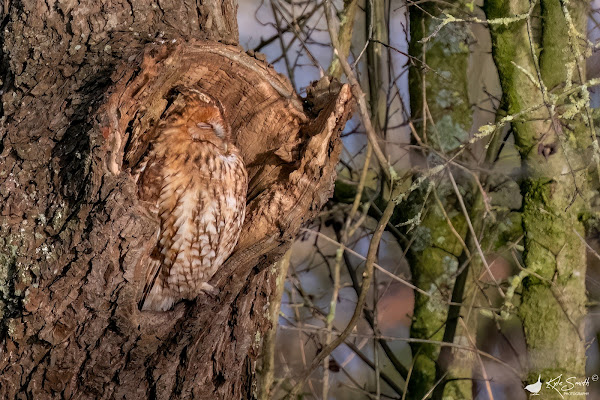


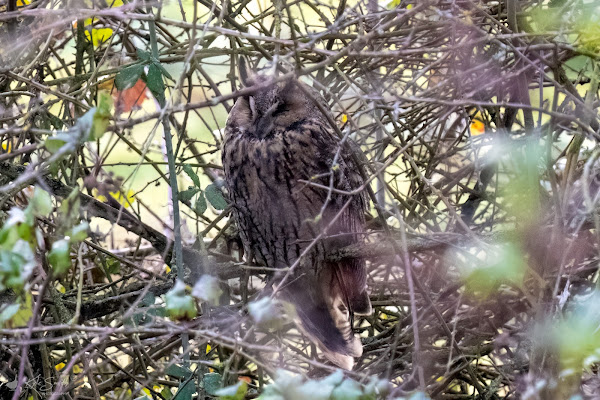
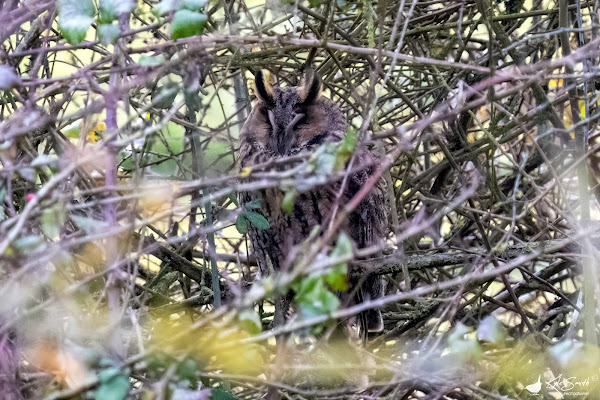
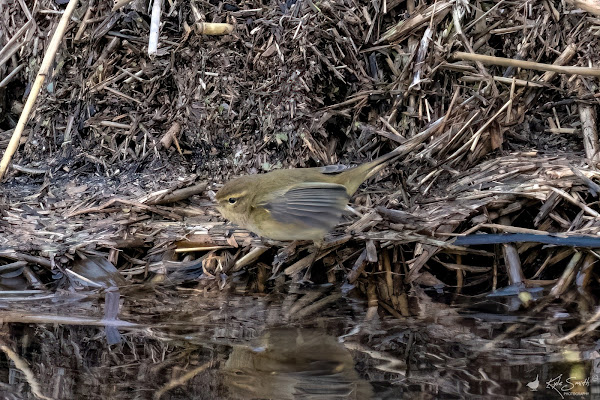

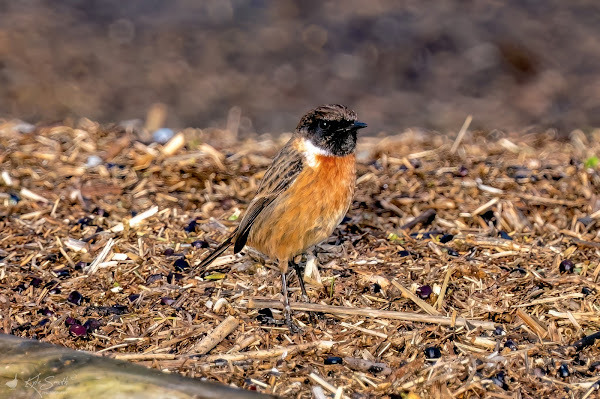

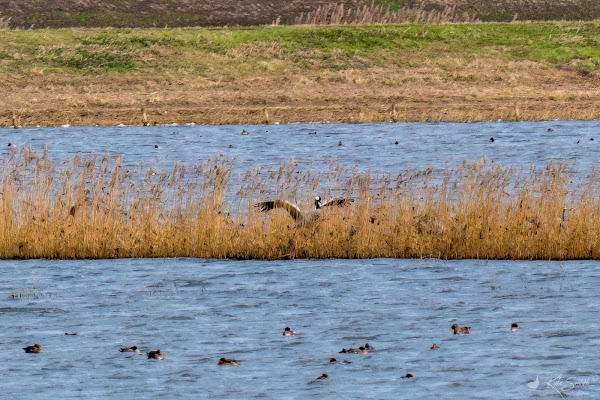







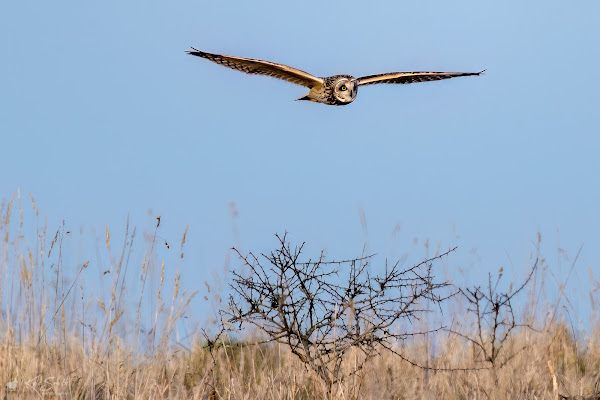
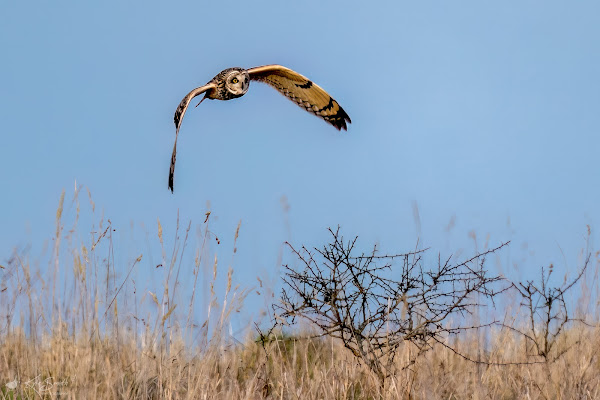

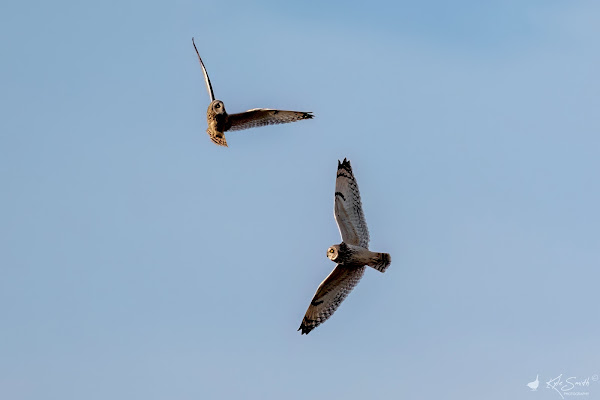
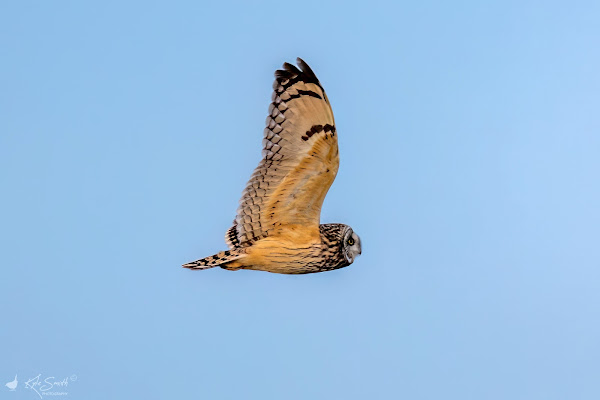
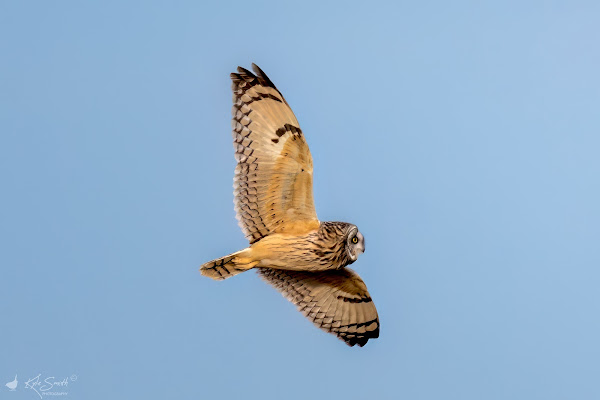


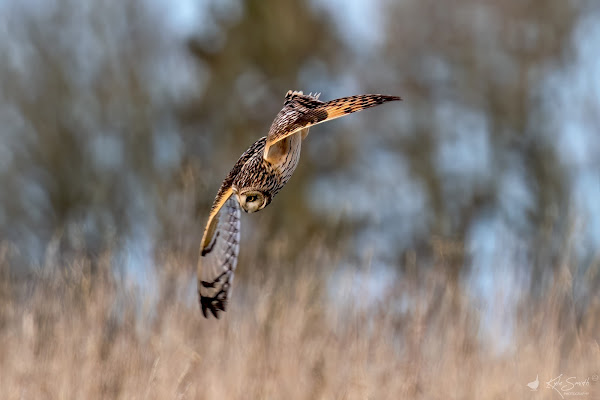


Good stuff mate.
ReplyDelete